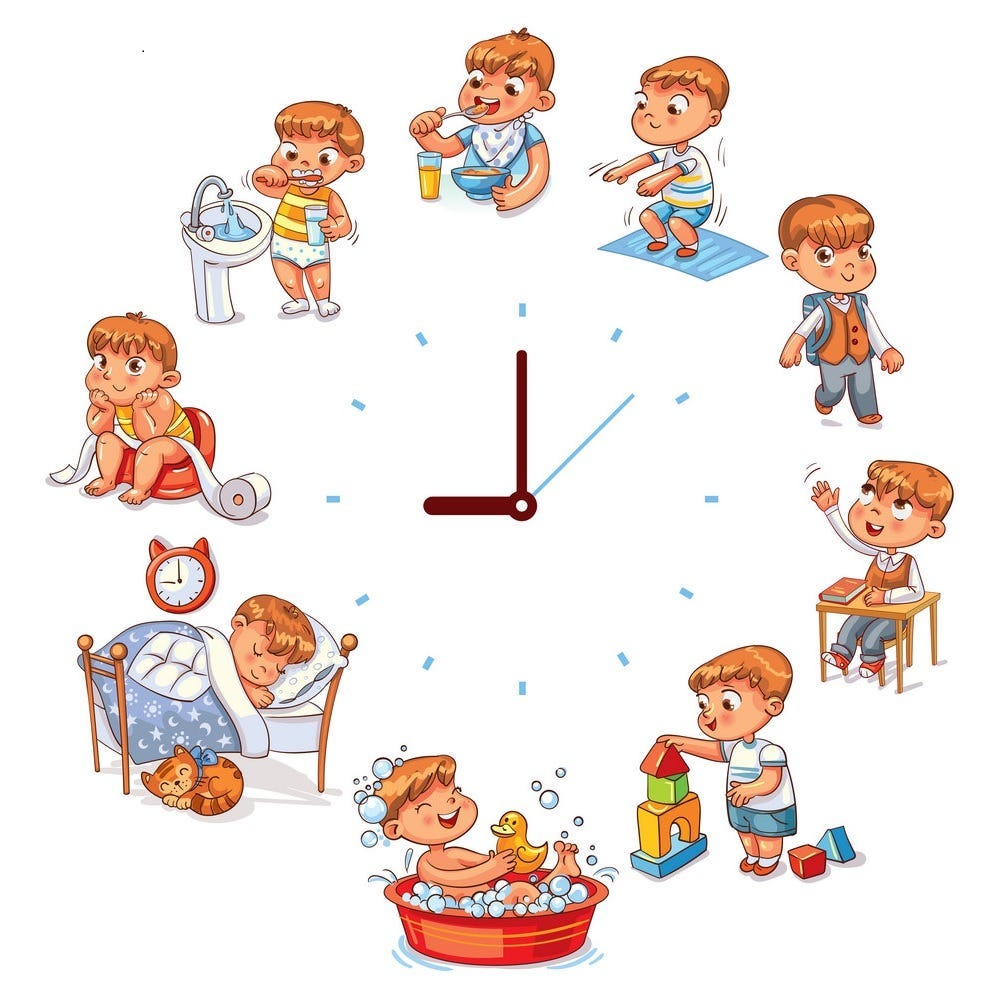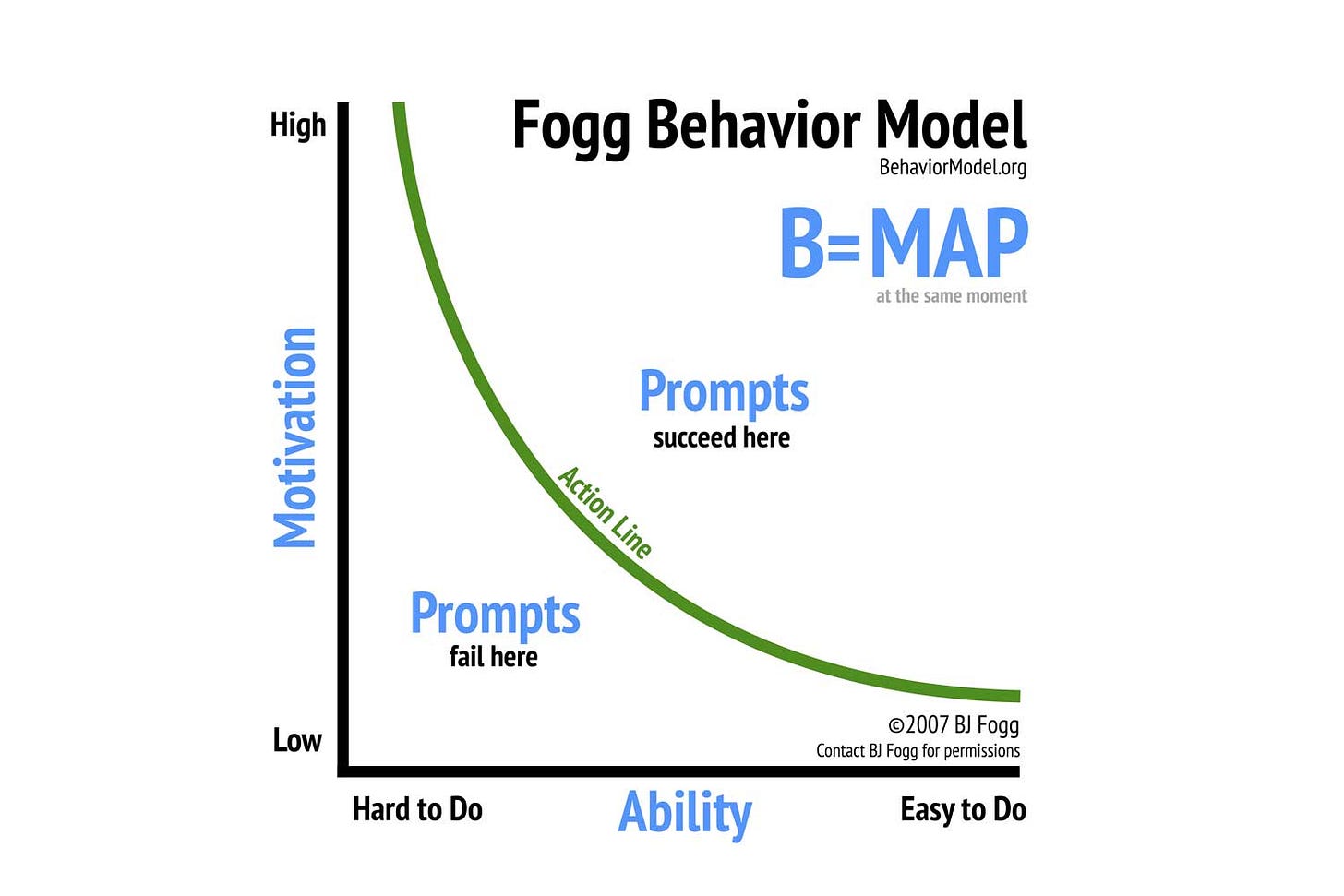Think.
Last week I mentioned the term Basic Daily Routine or BDR, and I received at least a dozen emails asking about it, so today we’ll dive in.
I wasn’t sure where I picked up the term, but a quick search lead me to the Marine Corps Order covering Recruit Training (MCO 1510.32f) which defines Basic Daily Routine (BDR) as “ …the period of time in the morning between reveille and the first training activity of the day and in the evening between the last training activity of the day and taps. BDR includes housekeeping chores and preparations for the day's training…”
In civilian speak, we could just define it as “What you do before and after work.”
Last week I suggested that you use the week to write down where you spend your time. If you did, every regular activity before and after work that you listed is your BDR.
Your BDR may look a little different on weekends or days off, but that just means that you have two distinct BDRs.
And while my children are no longer children, I can empathize with the fact that parents of youngsters may have a BDR that ebbs and flows at the whim of a toddler- (enjoy it while it lasts).
But for those of us who have control of our time, it is just as foolish to follow someone else’s BDR (as I talked about last week), as it is to fail to examine our own BDR for areas for improvement.
Here are the first ten things I do when I wake up at 4:30:
Go #1
Wash my hands and face
Brush my teeth
Floss
Put on workout clothes
Go to the kitchen and turn on the water kettle
Grind coffee - (I’m bougie that way)
Feed the dog
Add coffee and water to the coffee press and set the timer for 3.5 minutes
Take my cup of coffee to the couch where I journal and read for 30 minutes
My morning BDR continues on for roughly 25 items and 90 minutes before I get to the gym, or start my run or ruck, and overall I’m pretty happy with it.
If you are familiar with the Fogg behavior model you know that each of these events is the prompt to begin the next, and each prompt is an opportunity to establish a new habit.
Lately, I have been doing a lot of research into aging with the desired outcome of ensuring that I am able to perform optimally and continue to have epic adventures well into my triple digits. (This is not as crazy as it sounds. Longevity science is beginning to make some serious leaps, but more on that another day.)
The biggest reason that we age is that we stop doing stuff. The two biggest symptoms of not doing stuff are loss of balance and flexibility. Therefore, I find that the best use of the spare moments in my BDR is to work on balance and flexibility.
Sticking my toothbrush in my mouth is the prompt to stand on one leg for the minute it takes to brush my lower teeth, then I switch. Try it. If it is too easy, close your eyes. Your ability to balance on one leg is a good predictor of longevity
In the 3.5 minutes it takes for the coffee to steep, I have started working on my flexibility like the Japanese do, Radio Taiso, or radio calisthenics. This is the short flexibility routine you may have seen Japanese school children or factory workers engaging in. It takes just three minutes and gets all of your joints moving. Give it a try.
OK, I don’t watch the video every day, but I do use the time to knock out a quick stretching routine.
I still go out and crush a six-mile run or ruck and smash steel in the gym, but this addition to my BDR allows me to work necessary balance and flexibility training into otherwise wasted time.
If you can, and if the sun is up, it’s also a great idea to get outside and get an early dose of sunlight that will help reset your internal circadian clock and provide the Vitamin D many folks are deficient in.
Looking for wasted time to use to your advantage was what Kipling meant when he said,
If you can fill the unforgiving minute
With sixty seconds’ worth of distance run,
Read. Moonwalking with Einstein by Joshua Foer
It has been several years since I read this book, but listing the steps in my BDR reminded me of the method of loci mentioned in the book and described below.
Write.
The other benefit of knowing the list of distinct activities that comprise your BDR is that you have the opportunity to use these items for the method of loci or “memory palace” invented by Greek poet Simonides of Ceos in 477 BC. This is a method that is still used today to remember a list of things. In a nutshell, each stop on your BDR is a ‘hook’ that you can hang an item on. If you can clearly see yourself moving through the steps of your BDR, you only need to associate the item you want to recall (in as wild and memorable a way possible) with the ‘hook’. Once complete you can move through your memory palace and recall everything left there.
Plus, remembering things is good for your brain.
Want to know more? Let me Google that for you.
Repeat.
Words of wisdom from those who said it best:
“Every day of our lives, we are on the verge of making those slight changes that would make all the difference” – Mignon McLaughlin
“We are what we repeatedly do” – Aristotle
“Every day do something that will inch you closer to a better tomorrow” – Doug Firebaugh
“Where you spend your attention is where you spend your life” – James Clear
Thanks for reading, I truly appreciate your support and would love to hear your comments on this post. See you next Thursday!






Another very useful read. The combination between useful/practical and reading/research strike a very inviting balance. The IF quote too. I can't wait for next week.